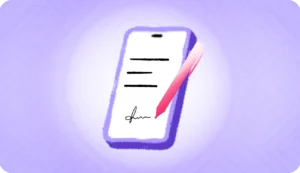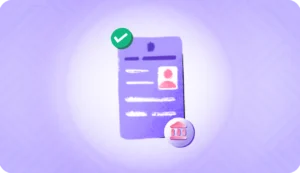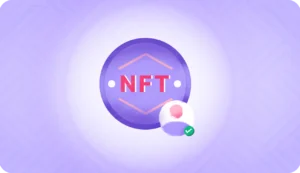In the digital age, we have moved over the ‘wet ink’ signature to an electronic signature. Think of any documentation work you did in the recent past, and you’ll notice the pattern is becoming very prominent. An electronic signature is basically the broad term for any electronic or digital way of showing acceptance of a message, mail, or document.
Industry insiders say, the e-signature or electronic signature received the biggest ever push from the pandemic. A survey by Adobe revealed that the year 2020 accelerated e-signature usage significantly, with young consumers and businesses being the biggest drivers of the paper-to-digital transformation narrative.
No wonder, the growing popularity of e-signatures is attributed to the many benefits it brings. Let’s take a closer look at them to understand e-signatures better.
FEATURES AND BENEFITS OF E-SIGNATURE
The adoption of e-signature is growing rapidly as businesses now look upon e-signatures as a crucial component of digital transformation that helps them to digitize transaction workflows and processes.
- Save time: e-signature saves considerable time spent for getting work done from approvals and authorizations to inking deals and speeding up the processes.
- Hybrid and remote work: As more and more companies across the industry adopt distributed team culture in the post-pandemic world, remote and hybrid working has become part of the systems. To enable and support this, electronic processes, including e-signatures are crucial.
- Save cost: The biggest business case push for electronic signatures comes from the economic value they bring. Besides cutting down admin and management times, electronic signatures also lead to significant savings in the form of paper, copying, packaging, and shipping.
- Security: With the growing adoption and burgeoning e-signature market, many electronic signature vendors now provide features such as authentication and security. The additional features such as tracking and verification further add to making e-signature processes secure.
- Agility: e-signatures provide the quintessential flexibility to execute business contracts and
E-signature implementations are also valuable due to their inherent ability to:
- Replace analog processes
- Secure connections
- Automation of processes
E-SIGNATURE USE CASES
There are multiple business cases that reflect the transformational ability of e-signatures.
- Supply chain and procurement industry
A study by Aberdeen presents one of the best use cases of e-signature in the supply chain and procurement industry. Its usage reduces the time spent in securing signatures and at the same time leads to the creation of an electronic record that helps to automate the entire contract management process. It helps to cut:
- Contracting Delays
- Governing and maintaining relationships
- Automating decisions
- Supporting automation in entire contract management
- Hospitality industry
In another report, research consultant Forrester highlighted some important business metrics which drive home the value of e-signatures.
- an 85% improvement in productivity
- or the 22,000 staff hours another enterprise saved annually
A hotel group interviewed for the report concluded that paper documents send the wrong message to customers in the digital age. It is ultimately the impact of e-signature technology on customers that is most important.
ARE E-SIGNATURES SAFE & LEGAL?
To answer this, yes e-signatures are safe and legal. They are also more secure than paper-based ‘wet ink’ signatures, which are vulnerable to tampering and forging. Even though they have been in use for many years, the question arises as e-signature users want a binding and enforceable contract in the eyes of law.
Let’s look at some ways how countries across the world achieve safety and legality with e-signature.
- The US
On June 30, 2000, the US government approved the Electronic Signatures in Global and National Commerce Act (ESIGN Act). Together with the Uniform Electronic Transactions Act (UETA), the Act recognizes that electronic signatures are legally binding if the parties give consent for digital signing.
- India
India regulates electronic and certificate-based digital signatures by Information Technology Act, 2000 (IT Act). The IT Act differentiates between electronic signatures and certificate-based digital signatures, though they are both recognized legally and given the same status as handwritten signatures. The following under the Act define the usage and application in India.
- Information Technology Rules, 2000
- Digital Signature (End Entity) Rules, 2015
- Information Technology Rules, 2004 (Use of Electronic Records and Digital Signature)
HOW TO CREATE AN E-SIGNATURE
One of the most commonly seen forms of electronic signature is a digital version of the handwritten signature.
You can do it in either of the ways, as per your choice:
- Use your finger or mouse for drawing
- Click an image of your signature, and upload the image
For document signing, you can select the source of the signature and name and apply the selected e-signature. Once the e-signature is placed appropriately you can review and authenticate the signature.
E-SIGNATURE VS DIGITAL SIGNATURE
The widely used avatar of e-signatures is the digital signature. A digital signature is a type of e-signature created with a virtual fingerprint unique to the person or entity based on cryptographic and Public Key Infrastructure technology. This makes it more secure, and tamper-proof, and embeds the information permanently.
The encryption of a digital signature means that the information in the signed document is secured and the authenticity of the signature can be verified. Digital signatures have the following characteristics:
- Secure
- Tamper evidence
- Non-repudiation
CONCLUSION
Both e-signatures and digital signatures represent the consent of the party to sign digitally. Though they have different characteristics and are applied differently depending upon the use case, they have the power to transform processes, save time, save costs, bring efficiency and change the documentation experience completely.
A holistic solution from a trusted vendor can help you ensure security and verifiability.
FAQs
Can an e-signature be typed?
The e-signature needs to be created using a cursor, mouse, or finger as stated above.
Can you create a digital signature?
Yes, by using a trusted digital signature software you can create your own digital signature. You need to upload the electronic signature and position it in a place where it’s intended. You may need to add the date too.
Why do you need a digital signature?
Digital signatures are helpful in identifying and verifying the party associated to ensure the integrity of the sender and document, using a trusted digital signature solution. With ‘wet ink’ based processes being replaced by paperless approaches, online transactions are now commonplace. The use of digital signatures can help you secure and safeguard your document.





